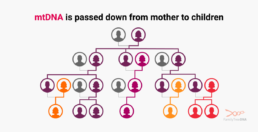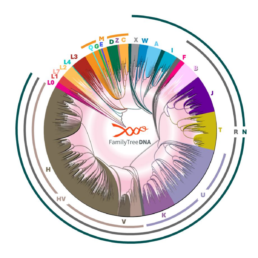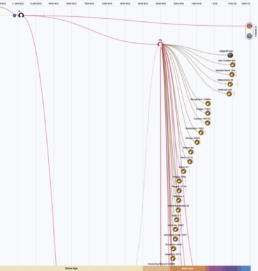FamilyTreeDNA has added over 12,700 new mtDNA haplogroups to the Updated mtDNA Tree of Humankind, marking the second significant maternal lineage expansion this year.
The Updated mtDNA Tree of Humankind has received its second major expansion of the year, adding more than 12,700 new mtDNA haplogroups and bringing the tree to 53,836 total branches—more than a 30% increase since March.
Earlier this year, FamilyTreeDNA released a foundational update that built upon the legacy of PhyloTree, incorporating new research, laboratory discoveries, and global mtDNA data. This latest expansion builds on that work, offering even finer maternal lineage resolution and improving the accuracy of mtDNA haplogroup classification across the world.
We also introduced the mtDNA Discover™ haplogroup reports, further connecting customers to the historical context behind their maternal haplogroups.
mtDNA Haplotree Branch Numbers – November 2025
Below is a breakdown of the haplogroups that experienced the largest gains in both absolute growth and proportional expansion.
Overall Growth
- Total branches: 53,856
- Growth in November: 12,773
- Growth Rate: 31.09%
Top Contributors (Absolute Growth):
- Haplogroup H: +2,256 (+18.68%)
- Haplogroup U: +1,240 (+23.79%)
- Haplogroup M: +1,195 (+71.09%)
- Haplogroup B: +1,005 (+74.89%)
- Haplogroup D: +581 (+64.56%)
- Haplogroup T: +580 (+19.51%)
Top Contributors (Largest Percentage Growth):
- Haplogroup Q: +128 (+250.98%)
- Haplogroup E: +61 (+110.91%)
- Haplogroup Y: +36 (+109.09%)
- Haplogroup F: +321 (+108.45%)
- Haplogroup O: +5 (+100.00%)
- Haplogroup P: +107 (+92.24%)
Insights From Our Research & Development Team
To better understand what changed in this release of the Updated mtDNA Tree of Humankind, our Research & Development Team shared the following technical overview. This update is built using the internal Mitotree development pipeline (version 2025.10.04), which powers the Updated mtDNA Haplotree.
The major November release of the FamilyTreeDNA Mitotree (version 2025.10.04) adds over 12,000 branches to the tree of humanity (a 30% increase) and now includes more than 10,000 archaeological remains from around the world. We also added 46,000 new GenBank and other third-party samples. A significant amount of diversity was infused by including samples from studies of rare or underrepresented populations.
We used nearly 324,000 full mtDNA sequences including:
- 67,000 from FamilyTreeDNA customers
- 50,000 from GenBank
- 5,000 from 1000 Genomes
- 2,000 from miscellaneous studies
The Mitotree pipeline now supports the incorporation of aDNA (Ancient DNA) sequences. Over 2,000 new ancient sequences were used for this tree version and allowed more than 500 new branches to be formed.
More than 4,000 new branches were formed after overcoming a technical hurdle that allowed some private variants to be considered shared variants.
We innovated new methods for handling complex scenarios where multiple variants conflict with each other. This decreases the number of rapid reversals of the same mutation. We also improved many parts of the tree by filtering locally unstable variants.
We now officially have more Ancient Connections for mtDNA than for Y-DNA, and there are still many samples to add for future versions.
As this update expands the depth and resolution of the tree, it’s helpful to understand how mtDNA and maternal haplogroups are defined.
Understanding mtDNA Haplogroups and the Updated mtDNA Haplotree
Mitochondrial DNA, or mtDNA, is a small circle of genetic material passed down almost unchanged from mothers to their children. Because it follows a strictly maternal line, mtDNA testing is one of the most powerful tools for tracing deep maternal ancestry and understanding how populations have moved and evolved over thousands of years.
Each set of shared mtDNA mutations forms a maternal haplogroup, which represents a specific branch on the Updated mtDNA Tree of Humankind.
What mtDNA Haplogroups Represent in Maternal Ancestry
mtDNA haplogroups represent deep maternal lineages stretching back tens of thousands of years. Each group reflects a shared set of mitochondrial DNA mutations that help researchers understand population history, migration patterns, and ancient human movements. As the Updated mtDNA Haplotree expands, these classifications become more precise, revealing finer detail about maternal ancestry.
How the Updated mtDNA Haplotree Enhances Lineage Resolution
This version of the tree incorporates hundreds of thousands of sequences, including customer data, academic datasets, and ancient DNA. With more branches—and better-defined ones—researchers can identify more specific subclades and connect them to historic populations and archaeological timelines. These updates help refine maternal origin estimates and deepen the context behind each haplogroup.
The Role of Ancient DNA in Understanding mtDNA Evolution
Ancient DNA provides fixed points in time and geography, allowing scientists to anchor modern haplogroups to archaeological findings. By comparing present-day sequences to ancient samples, the tree becomes more accurate, more chronological, and more globally representative. This update now includes over 10,000 archaeological remains, significantly expanding historical insight.
How Tree Updates Refine Haplogroup Classification
Tree updates do not change your DNA—only how it is classified. As the tree becomes more complete, some users may receive a more specific haplogroup or deeper subclade. These refinements represent scientific progress and offer a clearer picture of your maternal lineage.
Frequently Asked Questions
Why hasn’t my mtDNA Beta haplogroup badge updated yet even though others have?
Haplogroup assignments for customers who received their mtFull Sequence test result before October 24, 2025, will be made available shortly. Customers who received their results later will receive an assignment in an upcoming update.
What does the “Legacy” badge mean on my Confirmed mtDNA haplogroup?
The Legacy badge shows your haplogroup assignment based on the older PhyloTree. The “Mitotree mtDNA Haplogroup (Beta)” badge shows your refined mtDNA haplogroup based on the Updated mtDNA Tree of Humankind.
When will my updated mtDNA haplogroup appear in Discover?
Most customers who received their mtFull Sequence results before October 24 will receive their updated haplogroup during this rollout. New and updated haplogroups begin appearing in Discover as soon as their branch is placed on the Updated mtDNA Haplotree.
When is the anticipated release date for mtDNA Globetrekker?
mtDNA Globetrekker is planned as a future feature within mtDNA Discover. The release date has not yet been announced, and the tool will become available once development and validation are complete.
Why hasn’t my mtDNA Beta haplogroup badge updated yet even though others have?
Haplogroup assignments for customers who received their mtFull Sequence test result before October 24, 2025, will be made available shortly. Customers who received their results later will receive an assignment in an upcoming update.
Do I have mtDNA Plus or mtFull Sequence?
You can check by signing in to your FamilyTreeDNA dashboard. In the Maternal Line Ancestry section, look for two boxes labeled Plus and Full in the top right corner. If the Full badge is highlighted, you already have the mtFull Sequence test. If it isn’t, your kit is eligible for an upgrade to mtFull Sequence, which unlocks the most detailed haplogroup classification and additional Discover™ reports.
Take Full Advantage of the Updated mtDNA Haplotree
With thousands of new branches added, the mtFull Sequence test provides the most precise maternal haplogroup classification and expanded Discover™ reports.
Discover the full story of your maternal line with mtDNA testing from FamilyTreeDNA.

About the Author
Courtney Eberhard
Senior Marketing Specialist for FamilyTreeDNA
Courtney is driven by a profound passion for genealogy, fueled by her personal journey as an adoptee with roots in the LDS church. Through research with FamilyTreeDNA, she has also been able to uncover her son’s father’s indigenous roots in Mexico and provide context for his origins.
In her spare time, she finds joy in connecting with her family and friends during cookouts, cheering for the Houston Astros, and cherishing her role as a dedicated full-time parent.







